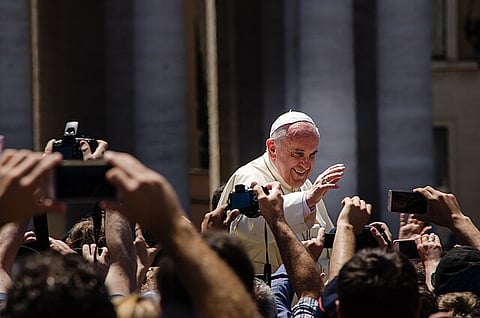

The Vatican announced Pope Francis’s death on Monday morning, following a severe respiratory infection.
At 88, his 12-year papacy has left a lasting impact on the Catholic Church, which serves approximately 1.39 billion followers worldwide.
His passing has sparked intense speculation about who will succeed him as the leader of one of the world’s oldest institutions.
The College of Cardinals, senior clergy primarily appointed by Francis, is responsible for selecting the next pope.
Only cardinals under 80 may vote in the papal conclave, a secretive assembly held in the Sistine Chapel to shield deliberations from external influence.
Currently, 138 cardinals are eligible to vote, exceeding the usual cap of 120 due to Francis’s appointments, per Al Jazeera.
Voting occurs via secret ballots, overseen by nine randomly chosen cardinals. A two-thirds majority is required to elect the pope, as both sources confirm.
After each round, ballots are burned, producing black smoke if no candidate secures the necessary votes or white smoke to signal a new pope, who is then announced from St. Peter’s Basilica.
The conclave typically begins two to three weeks after a pope’s death, following a nine-day mourning period and allowing cardinals to gather in Rome.
The 2013 conclave, which elected Francis, started 12 days after Pope Benedict XVI’s resignation. Logistical preparations determine the exact start date.
The conclave’s length varies based on the cardinals’ consensus.
Recent elections, including those of the last three popes, concluded within days.
However, historical conclaves, such as the 1271 election of Pope Gregory X, which took nearly three years, show that divisions can extend the process.
If 33 voting rounds fail to yield a result, a run-off between the top two candidates may occur.
With 110 of the 138 voting cardinals appointed by Francis, the electorate is notably diverse, with strong representation from Africa, Asia, and Latin America.
There is a notable divide between progressives, who endorse Francis’s liberal positions on topics such as divorcees and refugees, and conservatives, who advocate for a return to stricter Church governance, as per The Telegraph.
Among the frontrunners is Ghana’s Peter Turkson, a conservative cardinal and former head of the Pontifical Council for Justice and Peace, who advised Francis on climate change and social justice, per both sources. His election would mark the first Black African pope.
The Philippines’ Luis Tagle, dubbed “the Asian Francis” for his progressive views and humility, is a leading liberal candidate, though his relative youth may concern cardinals wary of a long papacy, as noted by The Telegraph.
Hungary’s Peter Erdo, archbishop of Esztergom-Budapest, is a conservative contender valued for his expertise in Church law, with Vatican expert Edward Pentin stating, “Erdo would be a safe pair of hands.”
Other candidates include Italy’s Pietro Parolin, the Vatican’s Secretary of State, praised as a “very competent diplomat” by Thomas Reese but tainted by a London property scandal.
Italy’s Matteo Zuppi, a progressive archbishop of Bologna, and Malta’s Mario Grech, a conservative-leaning compromise candidate, are also in contention, as is Portugal’s Jose Tolentino Calaca de Mendonca, a liberal heading the department for culture and education.
During the sede vacante period, the Camerlengo, currently Cardinal Kevin Farrell, manages Vatican finances and administration but cannot alter Church doctrine.
This ensures stability until the new pope assumes office.
The next pope will lead a Church shaped by Francis’s global focus, with nearly half the cardinals from the Global South, concerned with issues like poverty and climate change, per Father Reese’s remarks: “All politics is local. Every cardinal wants to know how the next pope will be viewed in their country.”
The lack of a clear frontrunner and the conclave’s opacity make predictions difficult, as Reese admits, “I predicted that there was no way they would elect a Jesuit pope. They went ahead and elected a Jesuit pope.”
Whether conservative or progressive, the successor will navigate a divided Church and global challenges, with the world awaiting the white smoke signaling a new era.